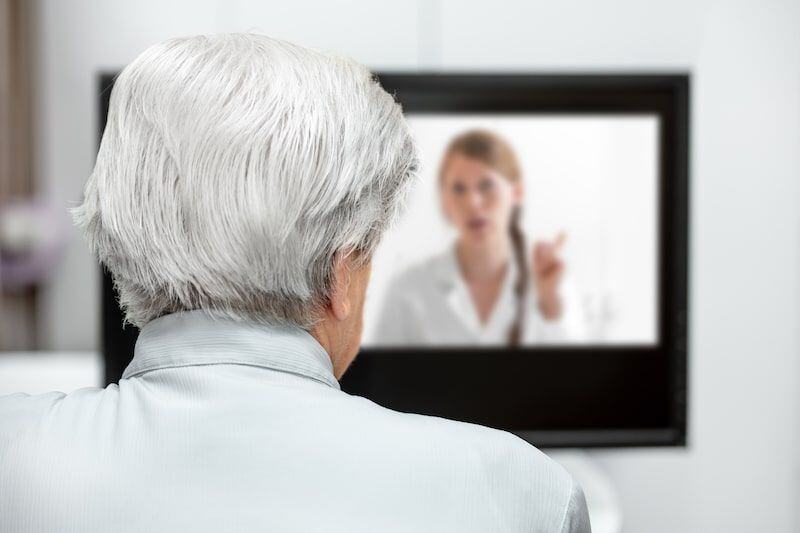How Telehealth Services Help Fight Against Coronavirus
As the world reacts to the growing threat of the new coronavirus, healthcare workers are on the front lines of the effort to combat this disease, safeguarding the population while also striving to protect their own health with limited supplies (including masks) while hospitals fear shortages of ICU beds and ventilators.
It’s clearly an all-hands-on-deck situation where ingenuity and flexibility will be called for to help us get through the pandemic. One tool in the arsenal against coronavirus (COVID-19) is the use of telehealth systems.
As a telehealth systems provider, Advanced Data Systems has helped many medical practices implement these solutions and see the results. Given the critical nature of today’s environment, we want to provide insight into how telehealth services can play a major role in the future.
In this article, we discuss how telehealth services will help us in the fight against coronavirus.
What Are Telehealth Services?
Telemedicine, also referred to as telehealth services, involves allowing patients to use their own equipment, such as a smartphone, tablet or desktop computer with a camera connected to the internet to engage in online doctor consultations. The doctor can be in any location too, whether at the clinic, responding to patients from home, or out on rounds.
Telehealth is useful in providing services to people in remote locations where medical providers are scarce. It’s also a boon for patients who have difficulty leaving their homes, such as if they have debilitating mental or physical ailments or must stay at home to take care of children or aging parents.
And now that we are all being encouraged to keep our distance from one another to slow down the spread of coronavirus, telehealth becomes an increasingly vital technology to lean on.
“The use of telemedicine is going to be critical for management of this pandemic,” said Dr. Stephen Parodi, an infectious disease specialist and an executive from The Permanente Medical Group, in the New York Times article.
The Permanente Medical Group is a doctors’ group associated with Kaiser Permanente, a major leader in telehealth. The Times also noted that private health insurers met with President Donald Trump to tell him they will pay for telehealth visits of people who may be infected with the coronavirus.
This is major news and a critical step for keeping people safe and healthy. Empowering medical practices to provide necessary services for those in need during the coronavirus pandemic will allow for many more patients to be diagnosed, treated, and cured without the stresses of medical expenses.
How Medicine is Changing With Social Distancing
Governments around the world are urging citizens to practice social distancing as much as possible, maintaining at least 6 feet away from one another, especially when out and about. Patients are also being urged to call doctors, hospitals, and clinics before coming, as the facilities may be overwhelmed.
This makes telehealth services an ideal solution for helping individuals maintain a safe distance. After all, if you can consult with your primary care physician using your smartphone from the safety of your own home, you avoid coming into contact with people who are currently carrying and potentially transmitting the virus and infecting you and your loved ones.
Telehealth also helps to increase the number of patients that nurses and doctors can visit, which means more people can receive vitally needed services without having to brave the crowds.
Doctors are also using telehealth systems within their own facilities to keep people safer during the coronavirus emergency.
“Health care workers at Massachusetts General Hospital in Boston have lashed iPads to IV poles to create makeshift video portals through which they can communicate with patients in isolation rooms,” reported Lee Schwamm, vice president for virtual care at Mass General's parent, Partners HealthCare, in a CNN report.
New Federal Funding Against Coronavirus Includes Telehealth Coverage
Older people are more susceptible to becoming compromised and dying from complications stemming from the novel coronavirus, especially those with underlying health conditions, such as heart issues, diabetes, and cancer.
Fortunately for elderly patients, congress has agreed to a new bill for emergency spending against coronavirus. According to mHealthIntelligence, the new bill waives geographic restrictions from Medicare on telehealth. Providers can engage with patients via telehealth through the emergency area definition in the bill. It quotes House Speaker Nancy Pelosi, who said, “To protect public health, the bill will allow Medicare providers to extend telemedicine services to seniors regardless of where they live, at an estimated cost of $500 million.”
Furthermore, “this expanded capacity will help preserve access to in-person care for those in critical need and allow the majority of initial screenings to happen outside the hospital,” according to the Alliance for Connected Care.
This means patients that truly need to be cared for inside of medical facilities will still be able to receive treatment while other patients are taken care of, at least initially, via telehealth.
Commercial payers are also helping to enable more patients to make use of telehealth services. “For example, Aetna and several Blue Cross Blue Shield plans have waived telehealth visit copays,” according to HIT Consultant, which noted, “Blue Cross Blue Shield of North Carolina has taken things one step further by temporarily covering telehealth services at the same rate as an in-person office visit.”
Technical Challenges for Telehealth During the Coronavirus Pandemic
Launching a telehealth system will come with some technical challenges that you and fellow stakeholders should keep in mind. For example, newly eligible Medicare patients are not currently covered for free telehealth visits.
Another report from mHealthIntelligence noted that, “To qualify as a medical provider who can receive payment for telehealth visits under the legislation, the provider must have a previous relationship with the patient, and they must have provided service within the three years prior. This barrier makes it difficult to offer covered telehealth visits in Medicare.”
Healthcare industry professionals are suggesting that the federal government waive rules about providing free telehealth services to seniors via Medicare during the outbreak since hospitals are not allowed to treat Medicare patients without charging them. The coronavirus emergency calls for waiving such rules.
Telehealth Software for Your Practice
Now that you have a better idea of how telehealth services will help in the fight against the coronavirus pandemic, you may be ready for some more details about telemedicine systems. To learn more about telehealth software, check out our free telehealth software demo.
About Christina Rosario
Christina Rosario is the Director of Sales and Marketing at Advanced Data Systems Corporation, a leading provider of healthcare IT solutions for medical practices and billing companies. When she's not helping ADS clients boost productivity and profitability, she can be found browsing travel websites, shopping in NYC, and spending time with her family.



